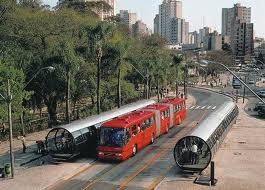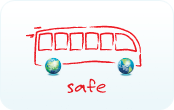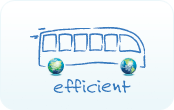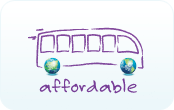 |
A new report titled “Modernizing Public Transportation,” presents reductions in air pollutants, greenhouse gas emissions, noise and traffic accidents, as well as increased efficiency achieved by bus rapid transit (BRT) corridors, compared with traditional bus services in 13 Latin America and Asia cities.
Corridors in the selected BRT can carry up to 45,000 passengers per hour in each direction, with comparatively low capital investments of less than $12.5 million per kilometer and small operational subsidies. BRT can be implemented quickly and provide high-capacity transportation for urban residents. The report also highlights the importance of making BRT projects a priority, particularly in developing countries, where infrastructure is limited and rapid motorisation is increasing urban problems such as congestion, pollution, and road traffic accidents.
“Modern buses are a key component of public transportation which has a major impact on the quality of life—including the environment, air pollution and public health—for millions of people,” EMBARQ Senior Transport Engineer Dario Hidalgo said. “Increasingly, these cities are upgrading or even transforming their public transport systems to better serve the needs of their populations and the environment.” In Europe, BRT System are setting a trend as Ireland’s capital Dublin is getting its first BRT route, called the “Blue Line”, to be built at a cost of €33 million – a small fraction of the estimated €5 billion price-tag for Metro North, which is expected to a high quality, high-frequency, high-capacity public transport service featuring all the benefits of a fixed-rail tram system.
The proposed service would carry more than 1,000 passengers per hour each way, running every six minutes at peak times and operating 18 hours a day, with an overall journey time estimated at 18 minutes. Each Blue Line station would have off-board ticket machines and shelters with comfortable seats and lighting.
Read the report Modernizing Public Transportation
Read also Bus Rapid Transit systems earn additional point in efficiency, user-friendliness and affordability and overtake light rail!
|














